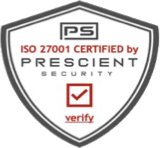People don’t like change. That is a humanistic trait that resonates with professionals all over the world. You’ve done things a certain way for five, ten, maybe twenty years, and you’ve been very successful with your established workflow. You don’t want to be told that you have to change.
This is a common roadblock when companies attempt to introduce automated technology to their teams. In industries like the legal community, which have traditionally been very resistant to modernized workflows, resistance to change is particularly strong.
What are the common reasons for resistance to change?
There are two major reasons why companies, including law firms, resist adopting changes to their collective workflows.
The first major reason is a human trait as old as time itself. People get set in their ways and don’t want to adapt to anything new. If you’ve been doing something successfully for a long time, your natural instinct is to push back against new workflows with the question, ‘why should I change what I’m doing? If it ain’t broke, don’t fix it.’
The second major reason is a similar human characteristic. People don’t like being told that they have to do something a certain way. Most people who are hired to do jobs prefer to be onboarded and then left to their own devices to get the work done.
Nearly 70% of professional workers have considered leaving their jobs altogether because of their frustrations with micromanagement. Forced adoption of new workflows is considered by many workers to be an aggressive form of micromanagement that can lead to resignations.
Tips to break down resistance to automated technology
Let’s look at two possible scenarios when addressing this objective. The first scenario will present the objective from the point of view of a named partner at a law firm. The second scenario will present the objective from the point of view of a paralegal at a law firm.
How named partners introduce automated legal technology to their firms
As a named partner at a law firm, it’s your job to ensure that business continues to grow. Your concern is acquiring new clients and servicing existing clients to the best of your firm’s ability. All these priorities are part of a broad effort to increase Legal Recurring Revenue for the firm.
Automated technology is designed to help your team of legal talent operate more efficiently. Solutions like entity management software streamline how your team completes routine clerical and administrative tasks. Streamlined workflows allow all legal talent to dedicate more time to servicing clients, increasing billable hours for the firm.
Therefore, as a named partner, you want your team to reap the benefits of entity management software. You can introduce a mandate for the whole firm to onboard onto the platform, or you can host a firm town hall to introduce the software and address any questions skeptical peers may have. Your position gives you the authority and influence to make this transition happen.
How paralegals introduce automated legal technology to their firms
As a paralegal, you’ll be the primary user of legal technology like entity management software. You have much less authority and influence than a named partner in the firm. Therefore, you’re faced with the much grander task of convincing the partners to purchase the software.
To complete your objective, make the case similar to presenting a legal argument in court. Conduct your research and lay out the facts to the chief decision makers at the firm. Reference statistics showing that most legal professionals devote fewer than three hours of their days to client billable hours because of the abundance of clerical work to complete.
Entity management software and similar automated legal technology drastically reduce the time spent on repetitive clerical tasks. Show the partners that a small investment in such a solution will pay itself back in more time that can be spent growing Legal Recurring Revenue for the firm.
How to overcome resistance to automated legal technology
Regardless of your title and level of authority, there will be challenges convincing your entire legal team to adopt automated legal technology. So what’s the best way to overcome that resistance and break through the barriers?
Sticking with the theme of dual approaches, there are two great ways to overcome internal resistance to legal technology. The first is to be as open, transparent, and inclusive about the new workflows.
Suggest the possibility of acquiring a new piece of software in a firm-wide memo, email thread, or slack channel (if you use slack at your firm). Open a forum for a robust discussion about the pros and cons of acquiring new legal technology so that you can address people’s concerns. This has proven to be a very effective method to break down resistance to new solutions.
The second approach is to encourage your legal talent to review testimonials from fellow legal professionals in other firms or corporate settings. Gain an outside perspective on how automated legal technology like entity management software changed the lives of the professionals in those other settings.
If it worked for them, it can work just as well for you. Take that feedback into consideration, and you may become very excited to change your approach to legal entity management with a more modern innovative solution.
Interested in learning more about the automated benefits of legal entity management technology? Wait no longer and join the MinuteBox revolution to transform your workflows into more efficient and more productive processes.


